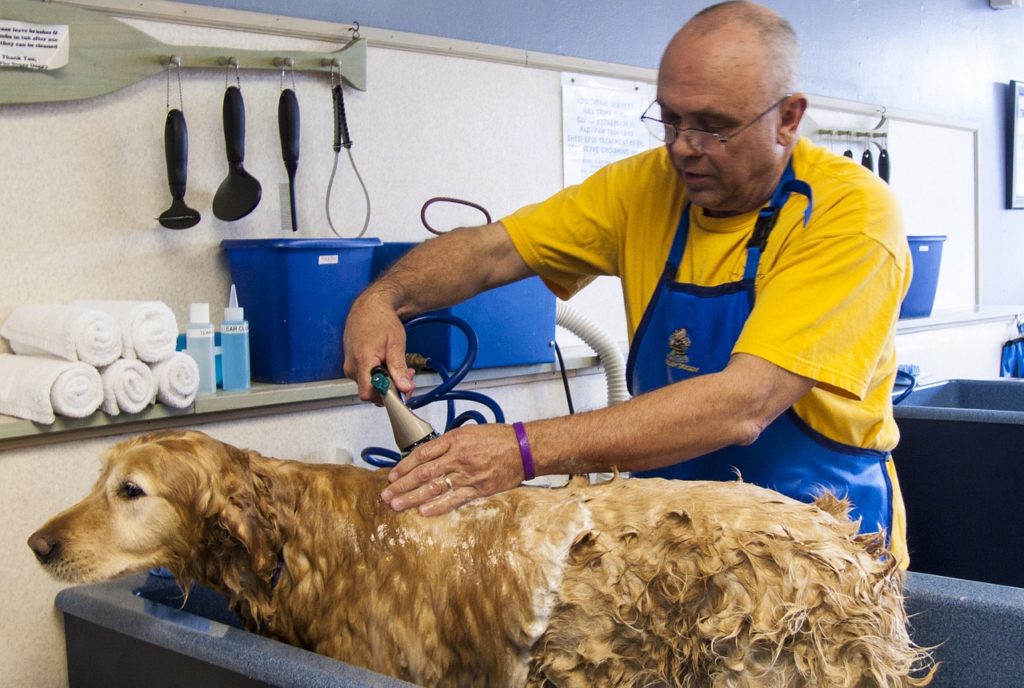Smart Tips for Grooming Dogs with Special Needs
Regular grooming is an essential step to a dog’s well-being. Not only does this lead to good hygiene, it also has a profound impact on the way your dog looks. Of course, most dogs don’t see it that way, but resistance is futile!
Good grooming attains even more importance for dogs with mobility issues and other special needs as they are unable to do any self-grooming they normally would for their own comfort. More importantly, the extra care and attention they get during regular grooming does wonders for their feeling of well-being. However, you do have to exert extra care when grooming disabled, elderly, or otherwise disabled dogs. Here are some tips that will help make the experience a positive one for both you and your dog.
Basic Tips
- All dogs respond better if they are in a familiar place, but especially dogs with special needs. Try to do any grooming at home to avoid making elderly and disabled dogs anxious. Find a mobile grooming service that will make home visits. The extra cost is well worth it.
- Grooming is more about hygiene than appearance. Keeping the hair short and orderly and the nails clipped can prevent many health issues from developing, especially for mobility challenged dogs.
- Removing matted hair without the proper equipment can be a horrendous experience for your dog. Hire a professional groomer to do this as they have the equipment as well as experience to do it painlessly.
- You can more easily detect physical problems if your dog gets regular grooming. These include lumps, growths, lesions on the skin, and parasitic infestations. A professional dog groomer can probably detect them more easily than you can, so make a point of having a regular schedule with one for your dog with special needs.
- You must make a point of brushing long-haired dogs regularly to avoid matting, which can make your dog’s life miserable.
Dogs with Mobility Challenges
Some dogs might have a problem with standing because of pain or lack of mobility. This could be due to age, joint pain, or physiological damage. In these instances, the dog will probably be most comfortable lying down during the grooming process. If that is the case with your dog, you will have to work around the situation.
Professional groomers handle this by working first on the accessible areas of the dog. They then use a harness to lift the dog and get at the hard areas such as the rear legs and undersides. You can do the same thing for your dog. If you have dog wheelchair, you might be able to use it in lieu of a harness.
If the dog signals distress or displeasure on being touched in certain areas, you have to act accordingly. It might be because the area is painful, or the dog just does not want it touched. Avoid these areas as much as possible, and have a quick and light touch if you do need to do some work on them.
Dogs with Hearing Loss
Dogs rely heavily on their hearing as well as smell in their daily lives. Losing their hearing can make it extra hard for them to deal effectively with humans. Hearing impaired or deaf dogs tend to be more anxious than those with normal hearing, so you have to take extra care when dealing with and grooming them.
For one thing, you have to be conscious about signaling your presence to them by sight or touch to avoid startling them. You can avoid getting a nasty bite or scare by making sure they can see you before you lay a hand on them.
Give clear signals about what you are planning to do, such as showing them the hose with running water before starting their bath, or letting them smell the brush before you start grooming them. You can also use touch to signal the part of the dog’s body you intend to work on, such as running your hand down the side of the body or legs and the neck, before you actually start.
You should also keep talking to them while grooming them. A hearing impairment might make it difficult for dogs to hear you, but they can still feel the reassuring vibrations of your voice if you are close enough.
Take your time when grooming your deaf dog. Going slow and being sensitive to their body language can go a long way towards making the experience a safe and satisfying one for you and your hearing impaired buddy.
Dogs with Sight Problems
Dogs with vision impairment can typically navigate a familiar environment without much trouble if they have their smell and hearing intact. However, you should ensure their safety while grooming by having someone always at their side to keep them from getting into trouble, especially if they are in a strange place. If you are grooming your dog at home, it might be a good idea to do so on the floor to be on the safe side.
It does help to keep your hand on your blind or visually impaired dog at all times during grooming, especially if it is their first time to go under the clipper. Let them smell and hear the clipper a few moments before applying it to their body to keep from startling or scaring them.
Keep up a steady flow of soothing talk to keep your dog reassured and calm. Again, going slowly can help keep the experience stress-free.

Thank you for sharing on how to take care of the dogs with special needs.